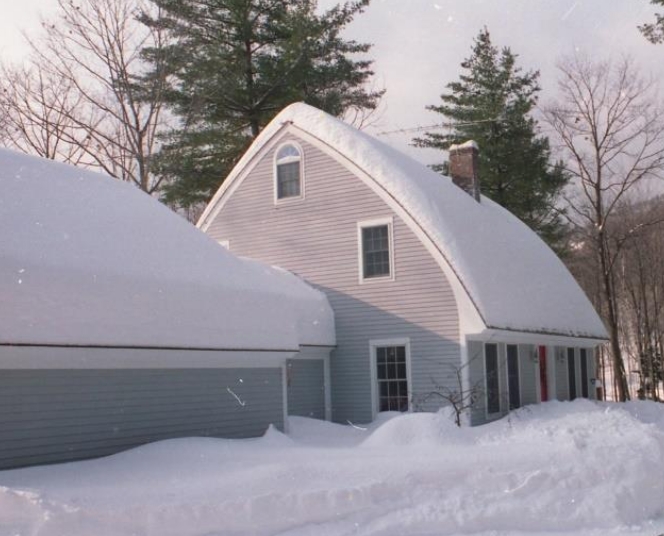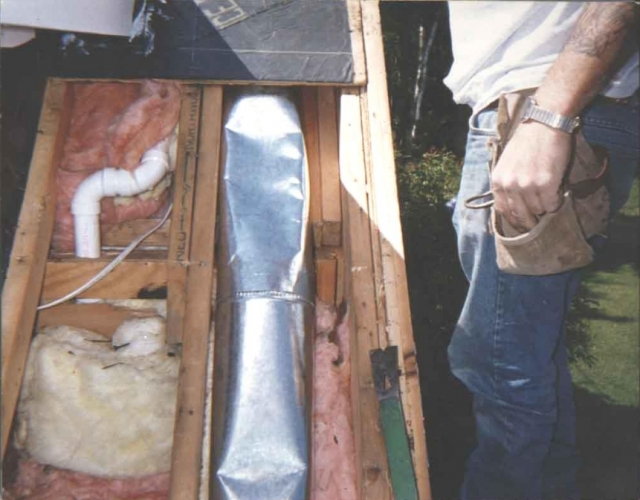
Image Credit: Henri Fennell
I first interviewed Henri Fennell, the celebrated spray foam consultant from North Thetford, Vermont, about twenty years ago. Back then, Joe Lstiburek, the founding principal at Building Science Corporation, called Henri “the foam god.” While Fennell’s former company, Foam-Tech, closed up shop years ago, Fennell hasn’t retired. He now works as a consultant, specializing in problems related to spray foam insulation or air leakage.
At the recent Better Buildings By Design conference in Burlington, Vermont, Fennell gave a well-attended presentation called “Theory and Practice for Attics and Cathedral Roof Slopes in Cold Climates.” Fennell’s presentation was based on a paper he authored called “Attic and Roof Slope Ventilation Design.” I highly recommend Fennell’s paper.
I won’t try to recreate Fennell’s paper, since it is available online. Instead, I’ll give a flavor of his presentation by sharing pithy advice that Fennell gave the audience.
Decades of spray foam experience
Fennell told the Burlington audience, “My first spray foam project was in 1971.” Fennell shared a large number of PowerPoint slides illustrating his experience tracking down air leaks.

Here are some nuggets that Fennell shared in Burlington:
“I’ve seen everything. I’ve even seen heat ducts located in the roof slopes.”
“Icicles are a symptom of roof melt. Icicles are almost always accompanied by ice dams.”
“In an attic, an air leak [through the ceiling] can heat up the entire attic. In a cathedral ceiling, an air leak will only cause problems in a single rafter bay.”
“I remember one job where the air sealing depended on the…
Weekly Newsletter
Get building science and energy efficiency advice, plus special offers, in your inbox.

This article is only available to GBA Prime Members
Sign up for a free trial and get instant access to this article as well as GBA’s complete library of premium articles and construction details.
Start Free TrialAlready a member? Log in















5 Comments
Perfect
Perfect article for what I've been dealing with this past winter. Thanks Martin.
In a nutshell
“The number-one cause of roof slope and attic problems is an air barrier problem. The last item on the list is ventilation. Take care of everything else — including air barrier issues and inadequate insulation issues — before you take care of ventilation.”
“If you increase the ventilation without addressing the air barrier, you increase the leakage.”
These two, although logical, are somehow counter-intuitive. I've spent a lot of time in futile efforts to fix roofs because I didn't take this advice on-board.
Are these concepts counterintuitive?
Malcolm,
I know what you're trying to say -- but these concepts are only counterintuitive to those who have been misled by false explanations of "why you need to vent."
Once we understand the fallacies behind conventional ideas concerning attic ventilation and cathedral ceiling ventilation, and once we understand why air barriers matter, then Henri Fennell's points cease to be counterintuitive.
More on these issues here:
All About Attic Venting
Prevent Ice Dams With Air Sealing and Insulation
Martin
Yes you are right. Counter-intuitive is the wrong way to describe it. Against what was commonly believed, and for too long incorporated into my thinking is probably more accurate.
Knowledge bordering on wisdom from Fennell here...
I have come into a couple of attic moisture/ice dam jobs now that had made a few revolutions through roofer-builder-insulator and it has made it clear to me that the air barrier is what none of them understood; up to and including bath fans not ducted out of the attic. Education may be the most important task in home performance today.
Log in or become a member to post a comment.
Sign up Log in